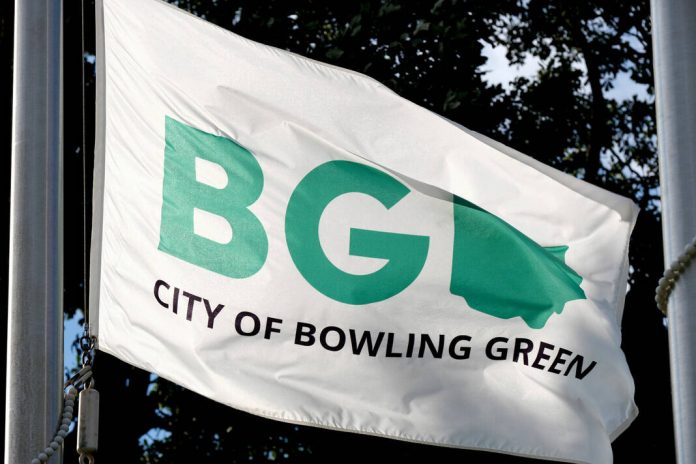Municipal Administrator Lori Tretter updated Bowling Green Council’s Finance Committee on the status of the new city building project’s costs at last week’s meeting.
She noted that, in October of 2020, Poggemeyer Design Group presented a financial projection for the project, with initial estimates in the range of $11 million, and at least $11.5 million was budgeted at that time.
It was recognized then, she said, that those prices would increase, and as part of the 2022 budget additional funding was included, and a plan is being put forward for increases in the 2023 budget.
A bond was issued in 2021 to pay for the project, when interest rates were still very low, Tretter said. She said cash reserves from some funds, and then budget appropriations, were also utilized.
“A lot has happened since 2020 and now,” Tretter said, including the pandemic, supply chain issues, inflation, and a significant increase in construction-related costs.
“It has been something that has been challenging to the entire construction industry and all those that are building buildings,” she said.
Tretter said that the city took actions to mitigate the costs of the building, including undertaking “construction manager at-risk,” which encourages a cooperative environment between the architect and engineering team and the owner, in which costs and impacts are taken into consideration as the building takes place. She said their team worked regularly to keep the balance in mind and make adjustments as needed.
The project has encountered challenges, Tretter said, including structural support issues at the old post office building that resulted in the installation of more than 300 “geopiers.” Bedrock was also encountered, as were infrastructure issues underground. Further, the concrete slab beneath the building was found to be 4 feet thick.
She said that, while the cost for the building itself remains in the range of $11 million, the ancillary costs have increased that to just over $14.5 million. Those costs include architectural design, engineering, construction manager-at-risk, surveying, permits, contingencies, and furniture, fixtures and equipment.
There remains a gap between the original $11.5 million estimate with $1 million for contingencies, and the current $14.5 million estimate.
Tretter said that funding for the project will remain at the predetermined levels in the various city funds, and that the 2023 budget will include appropriations from some fund balances.
However, the city’s Capital Improvement Fund, she said, cannot absorb the additional amount of the gap, and so in the 2023 budget, it will be recommended that an advance of $1 million be made from the Water and Sewer Capital Improvement Fund into the Capital Improvement Fund.
Essentially, Tretter said, the city will be borrowing money from itself. Such advances have been done before in the city, but not regularly, she said. The action would require legislative approval. Tretter said they would recommend a payback schedule of 10 years, with a clause allowing for early payback.
She said that looking at the Water and Sewer Capital Improvement Fund, they don’t believe that the move will impact the scope of that fund’s projects or investing in infrastructure.
“Of course, we’ll continue to monitor that as part of our financial updates” and annual budgets, Tretter said.





